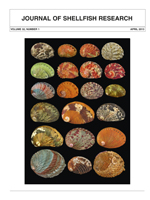The implementation of abalone aggregations as a tool for stock enhancement has been under discussion. For this purpose, understanding the self-recruitment capacity of managed reefs based on the amount of larval retention is an important task to evaluate potential success. Under the hypothesis that every reef is mostly self-restored within a short spatiotemporal scale because of a rather reduced planktonic period, the practice of aggregating mature adults of pink abalone in a reef would improve local recruitment. This study assessed local replenishment within an abalone reef of pink abalone Haliotis corrugata at Bahía Asunción (El Riíto reef), a location on the west coast of the Baja California Peninsula, where an aggregation of adult abalone was studied. A parentage analysis was carried out between adults transplanted to El Riíto and the juveniles collected from the same site by comparing their genetic profiles at 8 microsatellite DNA loci. The parentage tests defined successfully the status of more than 97% of the juveniles, revealing that approximately 4% of them could have been produced within the aggregation area. Because not all the potential parental abalone were collected, this self-recruitment proportion in the aggregation experiment was possibly underestimated. The suitability of parentage analyses, based on genetic markers as a robust alternative for the assessment of future aggregations, is discussed.
How to translate text using browser tools
1 April 2013
Assessment of Self-Recruitment in a Pink Abalone (Haliotis corrugata)Aggregation by Parentage Analyses
Noé Díaz-Viloria,
Sergio A. Guzmán-Del Próo,
Pedro Cruz,
Ricardo Perez-Enriquez
ACCESS THE FULL ARTICLE

Journal of Shellfish Research
Vol. 32 • No. 1
April 2013
Vol. 32 • No. 1
April 2013
Abalone
Haliotis corrugata
local recruitment
local settlement
microsatellites
parentage analysis
self-recruitment




